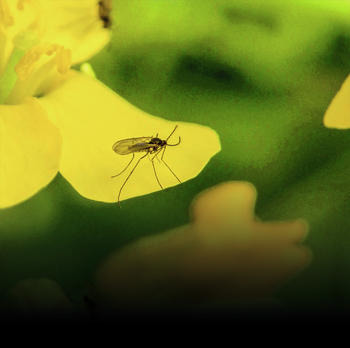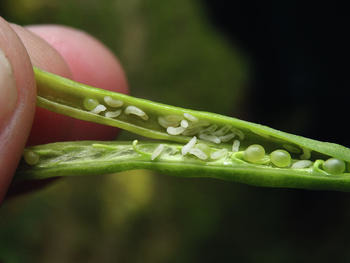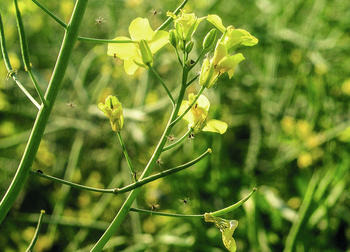Brassica pod midge
- Mosquito with 1.5-2 mm very small and inconspicuous. Bad flyer, therefore concentrated on the edges of the fields. Usually only active from middle/end flowering in places sheltered from the wind. Larvae 2 mm long, legless and headless. pupating in the ground, hatching and development of a 2nd and sometimes 3rd generation.
- Mosquito harmless, but larvae suck on inner pod walls. Pods burst open prematurely and fungus. Margins and main shoot are most affected.
CONTROL BENCHMARK
- Hardly to control, because mosquito is not detected via yellow trap. Mosquito is also easy to confuse with ichneumon flies.
- Exploits cabbage seed weevil oviposition sites, therefore indirect control of the midge through treatment. Midge can bite very young pods but also directly!
- Small fields and sheltered locations more heavily infested, concentrated on large fields - especially to previous year's rapeseed. Edge treatment often sufficient.
- Appears mostly after the optimal Sclerotinia control date. Additional late passage usually uneconomical.
- Larvae can no longer be controlled.
PREVENTION
- The most important natural enemies are ichneumon flies, ground beetles on the ground as well as nematodes and soil fungi.
- Turning tillage buries part of the mosquito cocoons.




